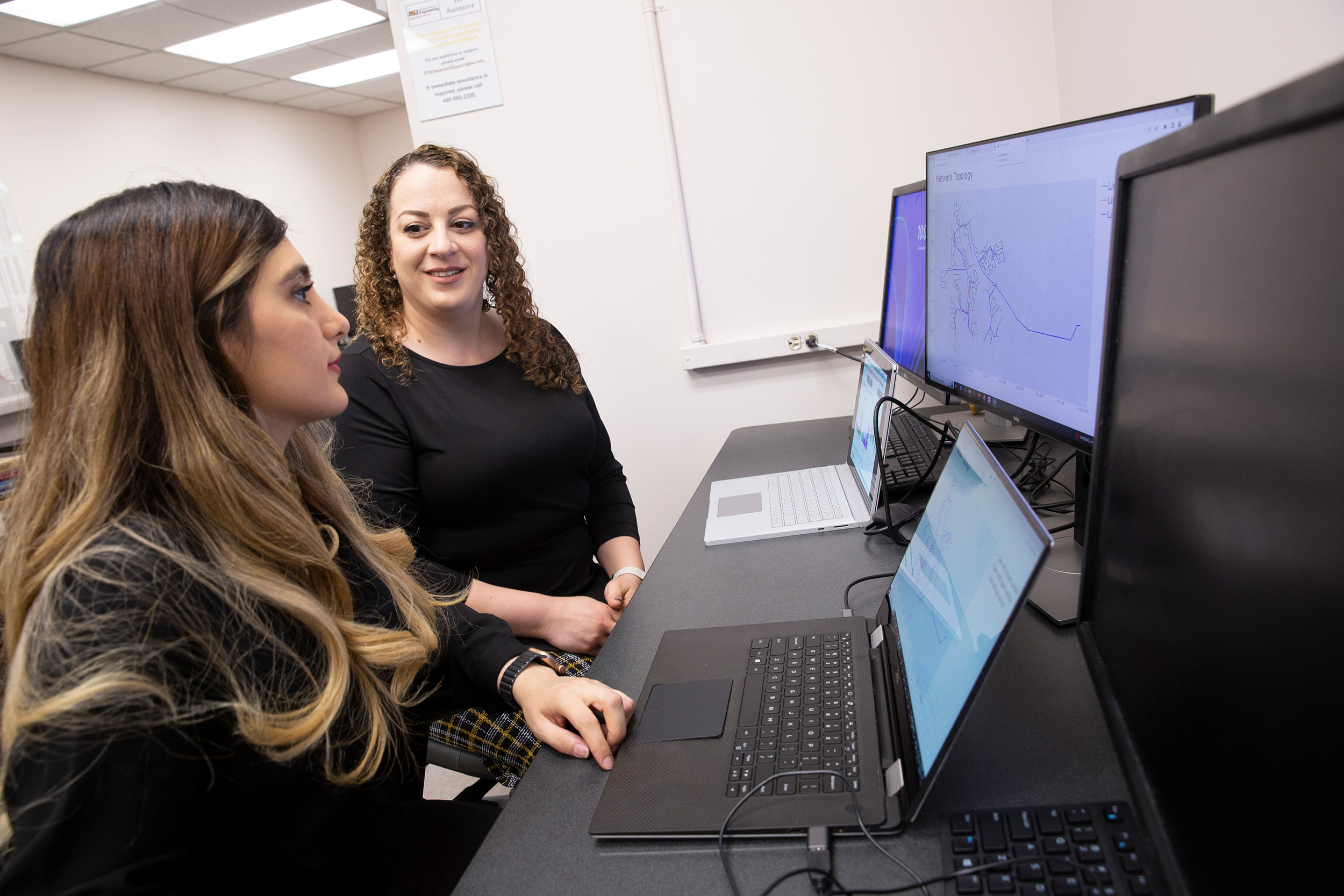
Streamlining situational awareness
ASU researchers invent new algorithm to improve power grid reliability and safety

Reliable and safe electric power is the heartbeat of modern society. Anyone who has lost power for a significant amount of time knows how much it can upend life, from food spoiling without proper refrigeration to being unable to work because essential equipment can’t be powered on.
Mojdeh Khorsand Hedman, an assistant professor of electrical engineering in the Ira A. Fulton Schools of Engineering at Arizona State University, and her doctoral student Zahra Soltani have developed an algorithm to reduce the impact of power outages and malfunction damage to devices connected to the power grid.
“This technology enhances situational awareness, which is key for improving power system resilience,” Khorsand Hedman says.
Assessing the situation of the power grid
Having power grid situational awareness means knowing the current status of three power grid parameters: network connectivity, referred to as breaker or switch status; the system state, which is the current voltage and power level flowing through the grid; and the location of outages affecting the grid.
Currently, situational awareness technology uses two software modules to measure these parameters. One module verifies topology information that indicates which medium voltage lines, used for power distribution to customers, are live, reflecting network connectivity and switch status. The other module determines system state.
“These functionalities are highly dependent on the availability of measurements throughout the distribution network,” Khorsand Hedman says. “Such measurement devices are scarce and often not available. Thus, these modules are not fully utilized.”
This new, more complex algorithm developed by Khorsand Hedman and Soltani identifies all the necessary parameters at once while improving accuracy and the speed at which the network connectivity and system states are identified.
Instead of using measurements from a limited number of devices that may not provide the full picture of a grid’s status, Khorsand Hedman and Soltani’s algorithm uses data from homes’ individual smart meters. This eliminates the need to install a large number of measurement devices in a power grid’s distribution network and telecommunication of the devices’ data to utility control centers.
The growing presence of electric vehicles and distributed power generation resources — like those generating electricity in areas scattered around the grid through devices such as solar technology and windmills — inspired Soltani to come up with the idea for the algorithm.
“Successful transition from the conventional distribution system to this new paradigm requires accurate distribution network modeling and efficient management of these resources,” she says.
Soltani explains that greater accuracy in situational awareness is necessary because modern grids’ increasingly distributed energy resources cause higher variability in grid conditions. Some of the power flows back into the high voltage grid from these resources, and the variability in the amount of power generated creates fluctuations in the net demand the grid experiences as well as both the amount and direction of power flow.
The research provided Soltani with the chance to advance her skills in using math and data to model and optimize power grid functions. Ultimately, she plans to continue using these skills after graduation in her career.
“Working with Dr. Khorsand Hedman has been a valuable experience for me,” Soltani says. “Her knowledge and expertise in power systems and optimization, as well as her mentorship and guidance, were invaluable in my research.”
Amping up electric utility service
The researchers intend for the technology, which is funded by the U.S. Department of Energy’s Advanced Research Projects Agency-Energy, or ARPA-E, to improve electric power service for customers by reducing the duration of outages and making the voltage sent to customers more stable. This can also reduce the potential impact of damage to devices plugged into the grid from malfunctions.
By being able to pinpoint power grid issues with greater accuracy and speed, the new algorithm helps utility workers do their jobs easier and solve outages and malfunctions faster. This increased situational awareness also helps electric utilities determine local demand and fulfill it based on distributed power generation resources like rooftop solar panels.
Khorsand Hedman and Soltani successfully tested the algorithm with an electric utility company in Arizona. Currently, the technology has a provisional patent, which means the researchers have 12 months of protection on their technology until a permanent patent is filed. ASU is also in discussions with interested industry parties to license the technology.
Demonstrating algorithmic capabilities in a lab setting
Khorsand Hedman’s students can look forward to getting a firsthand look at how their research can impact power grid workers’ experience. She is in the process of developing a lab that simulates a utility company’s control room. This lab will demonstrate her and Soltani’s algorithm, as well as other power grid algorithmic innovations, to show off its capabilities compared to traditional solutions.
The lab will also let electrical engineering students gain experience working in a simulated utility control room environment using the various types of software they’d work with at a utility company.
“The lab promotes and facilitates collaboration,” Khorsand Hedman says. “It will be used to enhance the learning experience for students in power courses, especially our graduate-level course, Power Systems Operation and Planning.”



































